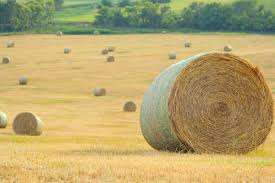By Mark Loux
It’s definitely a big year for cressleaf groundsel (Senecio glabellus), that yellow-flowered weed that can be seen about everywhere right now. While it is most often found in no-till corn and soybean fields that have not yet been treated with burndown herbicides, there seems to be an above-average number of wheat and hayfields and pastures with substantial populations. Cressleaf groundsel can be identified by its hollow and grooved stem with a purplish color, and yellow sunflower-type flowers. It is a winter annual that emerges in late summer into fall, and can infest late-summer seedings of forages and hay, and fall seedings of wheat. It can be controlled with herbicides in most crops, ideally in the fall or early spring when plants are small and most susceptible to herbicides.

At this time of the year, plants are flowering and going to seed, thus ending their life cycle. Applying herbicides to hay fields at this time probably won’t do much to reduce the risk of toxicity to animals (and it’s too late to apply any herbicides to wheat). Plants that have flowered are more difficult to control, and will still be there even if killed by herbicides. Major management goals at this time are mowing infestations soon enough to prevent seed production, and deciding what the risk of toxicity in hay or straw is based on the level of infestation. Cressleaf groundsel should not be present in hay fields following the first cutting. However, it is advisable to scout fields in late fall for the presence of newly emerged plants, and treat with herbicides if necessary.
Cressleaf groundsel is poisonous to cattle, horses, goats, sheep, and humans due to the presence of pyrrolizidine alkaloids (PAs). Symptoms include weight loss, unthriftiness, poor hair coat, anorexia, behavioral changes, sunscald, aimless walking, diarrhea, jaundice, liver damage, and possibly death. All parts of the plant are toxic. Drying or ensiling the plants during the hay or straw making process does not reduce the toxicity of cressleaf groundsel. Historically, no confirmed cases of poisoning by S. glabellus have been reported by the Ohio Department of Agriculture’s Animal Disease Diagnostic Laboratory, although liver lesions suggestive of PA poisoning have been observed on rare occasions. Although the presence of the occasional plant in a hay or wheat field is probably not cause for concern, producers are advised to avoid harvesting areas of the field that have high concentrations of the plants. Or bale and discard hay or straw from those areas of the field, if this is more desirable than leaving the plant residue in the field.